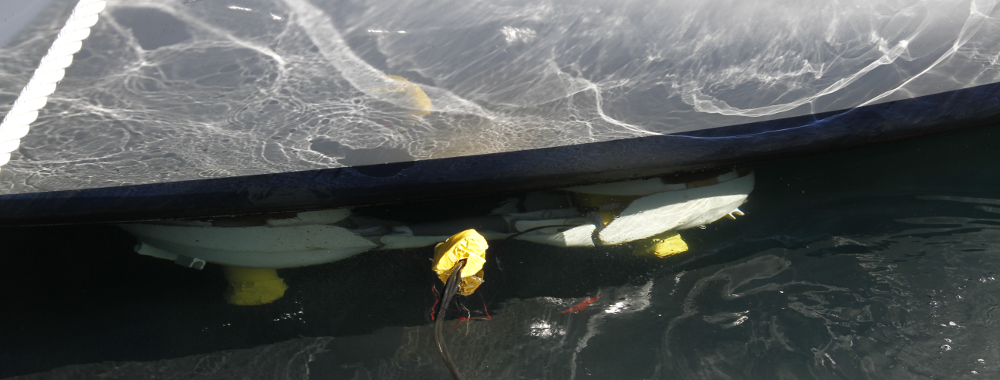
- Full title Desenvolvemento dun robot subacuático para a inspección e mantemento de cascos non magnéticos
- Funding entity Xunta de Galicia
- Researchers Francisco Javier Bellas Bouza, José Daniel Pena Agras, Richard J Duro Fernández, Alejandro García del Valle, Fernando López Peña
- Start date 19/11/2007
- End date 30/09/2010
- Innovación Logística Cargo-Xpress S.L.
- Universidade da Coruña
Description
Marine organisms adhere to ship hulls; this, known as biofouling, produces a number of adverse effects on a vessel’s behaviour during navigation. For example, biofouling can cause a speed reduction of up to 5 or 10%, and increases in fuel consumption of up to 30 or 40%.
In order to reduce or delay the onset of this problem, many hulls are painted with antifouling paints. However, every so often, the paint wears off. Vessels then need to undergo cleaning and maintenance in a dock and this task entails long periods of inactivity.
The objective of this project has been to develop a robotic system responsible for cleaning tasks on the ship’s hull. While the vessel is at port, these tasks would be performed as preventive maintenance. The aim here is to eliminate or delay the onset of adhesions and the need to go into dock before schedule.
As well as being capable of moving on metallic and non-metallic hulls, the robot can avoid the various obstacles it may encounter, such as sudden changes of plane, stabilising blades or bilge keels. This versatility of movement is possible thanks to its novel morphology. That is to say, it has two identical modules which can attach to and separate from the surface and are connected by means of an articulated arm. In this way, it manages to move around in a simple way: when one of the modules moves, the other is fixed to the surface, and vice versa. Each module has different cleaning tools, such as brushes and / or blades in order to eliminate biofouling. However, other applications are also possible here. This might be inspection work performed simply by incorporating cameras or other sensors as required.